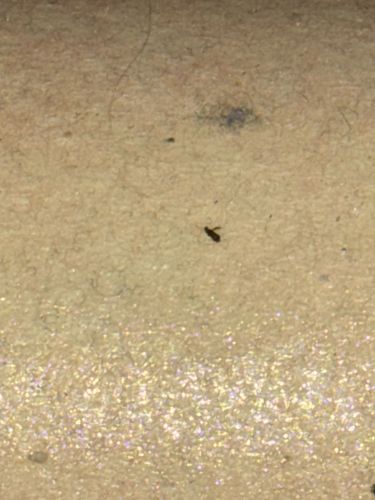Fungus Gnat (likely)
Scientific Name: Sciaridae (various genera like Bradysia) or Mycetophilidae (various genera)
Order & Family: Order: Diptera, Family: Sciaridae or Mycetophilidae
Size: Typically 2-8 mm (approx. 0.08-0.31 inches) in length

Natural Habitat
Moist, organic-rich environments, most commonly found near houseplants, greenhouses, growing operations, and any indoor or outdoor space with consistently damp soil or decaying vegetation. They are often indicators of overwatering.
Diet & Feeding
Adult fungus gnats typically do not feed or feed on liquids like water or nectar. Larvae feed primarily on fungi, decaying plant matter, and plant roots, especially fine root hairs.
Behavior Patterns
Fungus gnats are attracted to light and moisture. Adult fungus gnats are weak fliers and often seen walking or resting on surfaces near potted plants, windows, or sinks. Larvae live in the soil and feed on fungi and organic matter. Their life cycle typically takes 3-4 weeks to complete, with continuous breeding in suitable conditions.
Risks & Benefits
Potential risks include being a nuisance by their presence, especially indoors. For plants, heavy larval infestations can damage roots, leading to wilting, yellowing, and stunted growth, particularly in seedlings and cuttings. They pose little direct risk to humans (do not bite or carry diseases). There are no significant benefits.
Identified on: 9/4/2025